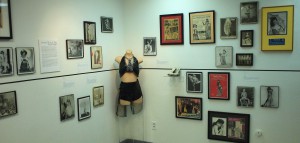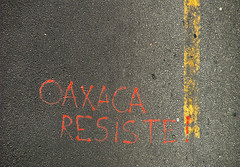20 years ago, I knew hardly anyone with a food allergy. Shellfish and strawberries were the only foods I’d ever heard of someone being allergic to. Then, suddenly, airlines were replacing peanuts with pretzels because of food allergies, and food started being labeled “Processed in a facility that also processes tree nuts.” A few years later, I met someone who was allergic to wheat. Pretty soon, it seemed like everyone I knew was allergic to something – gluten, lactose, chocolate, and a gazillion other things.
How can we explain this epidemic of food allergies? The radical shift from hunting and gathering finally catching up with us? Radical advances in medical technology that allow us to identify conditions that went unnoticed a generation ago? A build-up of environmental toxins in common foods? Interaction of foods with strange new food-like products like high fructose corn syrup and artificial flavors?
Or maybe we’re imagining the whole thing.
That’s the conclusion suggested by a recent study in the UK that found that only 2% of people who claimed to suffer from food allergies were actually allergic. The rest are suffering from something else, namely, the belief that they suffer from food allergies. 
Now, I don’t know much about medicine and physiology, but I do know a thing or two about belief, and when millions of people believe something that isn’t empirically verifiable (1 in 5 Britons, according to the article above), we’ve got some ‘splaining to do.
Now, my first reaction is what I think many food allergy sufferers will share: that the study is flawed, not in its procedure, but in its very medical-ness. That is, there’s a strain of anti-modernism in the recent explosion of food allergy awareness that simply doesn’t trust the mainstream medical industry to recognize and treat food allergies. So when you get a bunch of mainstream medical researchers to study the issue, it’s no surprise that they don’t find anything.
I doubt that’s true, but here’s the thing: the belief that it’s true is part and parcel of the food allergy… can I call it a “movement”? In their rejection of modern medical knowledge and modern food processing technologies, as well as their yearning for a more “natural” diet and a greater connection to their bodily functions, food allergy advocates (if not food allergy sufferers) certainly have at least some of the hallmarks of a social movement. And they’ve certainly created social change, as well – modern supermarket shelves are packed with (ironically) high-tech allergen-free foods: gluten-free beer, bread made of spelt, soy milk and ice cream, and so on.
But leave aside the political aspects of today’s food allergies; what intrigues me is the almost religious asceticism imposed by many food allergies. A vast number of foods are made containing wheat, for instance, so the wheat allergy sufferer is constrained to a diet that eliminates a great many common foods – much like a Jew during Passover, when most wheat-containing foods must be avoided as “leavened”.
The author of the Telegraph piece above notes the similarities between food allergies and food taboos, drawing on Mary Douglas’ understanding of the way boundaries create meaning and order:
[W]hat we eat not only defines us as people but also helps us to feel control and mastery over an otherwise chaotic and random world. She argued that by ordering foods into those we can consume and those that we can’t, we create meaning, and the boundaries provide order in our lives.
As a set of dietary restrictions, rather than a medical phenomenon, it seems reasonable to see food allergies – along with vegetarianism/veganism, the Slow Food movement, the “buy local” movement, and the $30 billion-plus diet market (in the US) – as an attempt to wrest back control over an aspect of our lives that we are increasingly and maybe irretrievable disconnected with. Few of us have any connection with the food cycle except as consumers at the end of a very long and complicated food production cycle. Food allergies allow us to assert control – on pain of death – over what we ingest, and demands an attentiveness – again, on pain of death – to what’s in the foods that we buy.
But this fussiness is part of a larger yearning for control altogether, which is where the anti-modernism comes in. Food has long been not only a means of forging and asserting cultural identity but of resisting the onslaught of a homogenizing, enervating modernity that threatens to dissolve not just cultural identities but individual identities. From the health spa/retreats of the Kellogg brothers and their peers (that gave us corn flakes and granola) to the popularity of Sweet-n-Low in the ‘50s and ‘60s to the communes of the hippie era to the herbal remedies of today, food has been seen as a way to “get back” to a more “natural” way of life – as opposed to the high-stress, low-community, detached and distracted way of life that is modernity.
None of this is to suggest that there are not very real food allergies – it’s hard to argue with anaphylactic shock. Nor, more importantly, is it to say that the 98% of food allergy sufferers in the study with no medically detectable food allergies do not, in a very real way, suffer. The bodily manifestations of the most obviously social disorders can still drastically limit a person’s quality of life.
What it does suggest is that treatment of food allergies needs to go much further than antihistamines and food avoidance to encompass the cultural psychological. If control is a central issue – as it is already recognized to be in anorexia nervosa and other eating disorders, which strike bright, ambitious young women with overbearing parents hardest precisely because they are the least in control of their lives and the most aware of it – then a) developing non-food strategies for regaining control, and b) developing a realistic relationship with the demands and pressures of daily life are also important to individual adjustment.
On a social level, food allergies and other dietary restrictions join a range of other control-seeking phenomena – pop psychology, personal productivity, conspiracy theorism, and religious fundamentalism, all of which attempt to throw a lasso around the neck of our stampeding lives. As a critique of modernity, there’s nothing original here; Georg Simmel’s The Metropolis and Mental Life addressed similar concerns about the loss of autonomy in 1903, and Emile Durkheim addressed similar concerns a decade earlier, noting the anomie inherent in industrial/commercial society in The Division of Labor in Society.
But over a century of social critique has done little to alleviate the real suffering of real people. The question is, do we have the resources and will to take on these challenges at a social level today? Or are food allergies, in fact, an adequate collective response to dehumanizing social conditions? Do food allergies, like, say, spirit possession on Chinese factory floors, provide the relief people need to cope with the impacts of modernity, even as they suffer?







